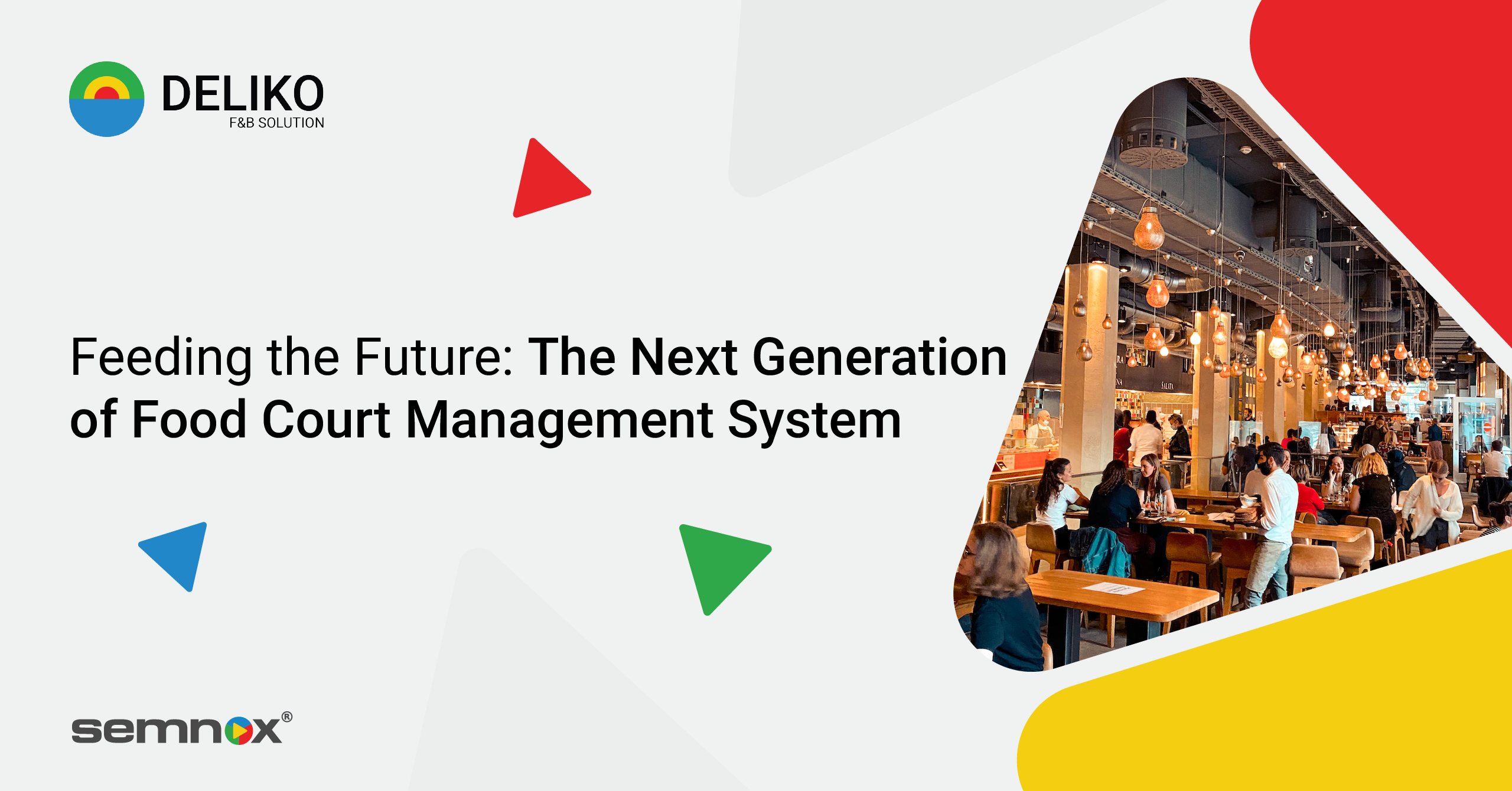
Feeding the Future: The Next Generation of Food Court Management System
Over the past few decades, the hospitality industry has seen rapid technological development. The rise of immersive technologies and changing consumer behavior have compelled food courts and cafeterias to adopt innovative solutions to improve their operations.
The modern food court management system has taken advantage of these developments and implemented them in the form of artificial intelligence (AI), virtual reality (VR), automation, and augmented reality (AR).
This blog explores how immersive technologies are redefining the future of the food court management system.
Current Trends in the Food Court Management System
Almost a decade ago, unorganized, inefficient, and noisy food courts with long waiting queues and substandard service weren’t uncommon.
Today, food courts not only offer variety, but they’re also technologically advanced and functional. One of the biggest contributors to this development has been the food court POS system.
From food preparation and ordering to inventory management and payments, every aspect of food court management is streamlined and efficiently handled by a food court POS system.
The following features of a food court POS system have radically changed food court management today.
1. Contactless Ordering
This technology saw an immediate rise during the pandemic and was implemented in various food court billing software.
Besides being a super convenient solution, contactless ordering is a safer and more hygienic option for customers, especially in the post-pandemic era.
By eliminating the need for cash handling and physical menus, contactless ordering accelerates the ordering and billing process. The result is less time waiting and happier customers.
2. Automated Inventory Management
This calculates storage space and updates inventory levels based on sales, so management staff can contact vendors and restock accordingly. It also evaluates shelf life, sends expiry alerts, and avoids space wastage for efficient kitchen inventory management.
3. Customer Relationship Management (CRM)
An efficient CRM collects guest data and enables the vendor to provide personalized services, which include rewards, suggestions, and special offers that encourage return visits and enhance customer experience.
4. Predictive Analytics
This technology uses analytical techniques from stored data to forecast sale patterns. It can help in menu optimization and operational efficiency, prepping the food courts for service in advance.
5. Integration With Online Ordering and Delivery Channels
Integrating your food court management system with online ordering and delivery channels allows your kitchen staff to directly receive third-party orders. So the hassles of manual order entries, multiple tablets, and delays are out of the picture.
The Future of Food Court Management System
For a decade now, tech advancements like artificial intelligence (AI), virtual reality (VR), automation, and augmented reality (AR) have been making noise for all the right reasons.
Though the development is rapid, many industries are still skeptical about adopting these immersive technologies because the human connection defines a dining experience — especially in the F&B and hospitality industry.
But with ever-evolving customer preferences, these technologies will alter the future of the food court management system.
Let’s explore how each of these technologies can support and create a futuristic food court POS system.
1. Augmented Reality for Food Court Management
Augmented reality can help the food court management system in the following ways:
- Menu display: Food courts can display digital menus using AR glasses or mobile devices. Customers can view the menu and check out 3D versions of food, creating a unique experience.
- Interactive experiences: Using AR, food courts can create interactive experiences for customers with entertaining games and quizzes engaging them while they wait for food.
2. Virtual Reality for Food Court Management
Virtual reality can help the food court management system in the following ways:
- VR walkthrough: Food courts can create virtual walkthroughs with VR, allowing customers to experience the ambience of the food court even before entering.
- Training: VR is particularly useful for training new staff in food courts as it provides a realistic simulation of various scenarios that they may encounter while working.
3. Artificial Intelligence for Food Court Management
Artificial intelligence can be inculcated in food-court management systems in the following ways:
- Cut costs: AI technology can automate simple tasks (like taking reservations, entering orders into POS, etc.), save overhead on staffing, and lower overall running costs.
- Inventory planning: AI can help track kitchen inventory levels by identifying items that are running low and forecasting demand for future items, helping staff make cost-effective purchases.
- Sales forecasting: Using advanced algorithms on current customer purchasing patterns and relevant data, AI can forecast how much revenue a food court will make over a period of time. This information can be used to make decisions about staffing, inventory, and marketing.
- Menu planning: AI can help food court management systems identify popular items, create menus that appeal to customers, develop new recipes, and test them out with customers.
4. Automation for Food Court Management
Here are three ways automation in the food court POS system helps food court management:
- Ordering and payment: Automating the front desk, order placing, and payments reduce the workload on staff and improve efficiency. This is possible with self-service kiosks, QR-code ordering, and other food court billing software.
- Inventory management: Automated inventory management system tracks stock levels, stock depletion, and expiry, helping food courts make concise inventory purchases while minimizing wastage.
- Automated promotions and intelligent CRM systems: A robust CRM system collects data from customer purchase patterns. This data can be used to offer customers promotions, offers, and discounts, giving them an incentive to eat at the food court.
The Future of Food Court Management System Is Here
Technology sees massive improvements every year, let alone every decade, and the hospitality and food industries (among other sectors) need to keep up to provide their patrons with the best experience.
This is where Deliko from Semnox Solutions steps in. Our expertise in F&B POS solutions and our experience of over 15+ years enables us to provide world-class, technologically advanced food court management and food court POS billing software that will scale your business operations. With Deliko, your business is always future-ready!To learn more about our services and solutions, visit our website now.

Suresh Kumar
As a highly experienced thought leader in the hospitality industry, Suresh Kumar carries a unique combination of global experience and multi-industry specialty. With 15 years of experience as the marketing head and director of Lucid IT Solutions and seven years of directing sales at Pazo, Suresh has especially honed skills with F&B and restaurant POS — skills that make him an irreplaceable asset at Semnox. Now, he spearheads the realm of cafeteria management solutions through seamless business operations and collaborative development.


